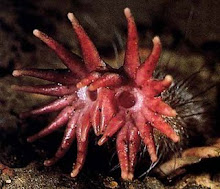Domestication
Felis domesticus isn’t all that domestic, really, despite the scientific classification. Cats aren’t domesticated in the sense that livestock, or even dogs, which also live with us, are. I’m sure that if asked, they would deny they are domestic animals, or even pets—they’d probably go for some term like “independent contractor” or even “unindicted co-conspirator.”
It’s no mystery how cats and people got together. It happened in ancient Egypt, one of the places humans first invented agriculture, which meant that they grew more than they needed for immediate consumption. Which meant that they had to invent grain storage. Which meant that they had a rodent problem.
Meanwhile, Felis silvestris lybica was lurking in the bushes, wondering where its next meal was coming from.
It didn’t take long for F. lybica, the African desert cat, to realize that hanging around the granaries and barns and stables was a good career move. And the Ancient Egyptian, being no fool, was quick to note that these rather pretty little critters, which were no trouble, really, and didn’t make that good eating, were damned useful in getting rid of the rats and mice.
So no doubt they lived in a state of mutual tolerance and pretense of ignoring each other’s existence, much like people in a crowded elevator: Ancient Egyptian going off to the fields, nodding politely as F. lybica trotted by with a mouse in its jaws. As they got used to being tolerated, even welcome, the cats came to live near humans, not just hunt there. Perhaps the humans even put out scraps and offal for them, to encourage them to hang around.
And then, one day, an Ancient Egyptian—probably a child, around seven years old, old enough to be curious and too young to be afraid—came across a nest of kittens, most likely in a barn or stable. Maybe she was playing, maybe she was gathering eggs. And here were these adorable, cuddly little creatures, making soft, sweet, squeaking sounds.
Of course she petted them. Who wouldn’t? And the kittens, being still in the socialization stage of young cats, didn’t object. And one of the great discoveries of history was made: Not only do people like to pet cats, but CATS LIKE TO BE PETTED BY PEOPLE.
It was almost certainly this way. It’s very difficult to tame an adult feral cat, and it’s a small wild animal that even a child would be wary of approaching when it arched and hissed. The first cat-human bond was almost certainly a child and one or more kittens, and it was a tamed kitten that undoubtedly became the first house cat. And Man made another discovery: Cats can keep the house free of pests, too. And they curl up on your lap and make this wonderful buzzing sound that really makes a house feel like a home.
From this “domestication” of F. lybica came all the other domestic cats in the world, as far as we know. And F. domesticus remains pretty much unchanged from its ancestor, and can still interbreed with it. Consider the vast differences humans have induced in other domestic animals by selective breeding; dogs, if Konrad Lorenz is correct, all originated either from the wolf or the yellow jackal, yet today the breeds vary from Chihuahua to mastiff. Look at fancy chickens—you won’t believe what you see. Even horses and cattle and sheep come in considerable variety. But cats are pretty much cats—some bigger, some smaller; some furry, some unfortunate ones hairless. But they can still interbreed with each other (which is how I come to have a couple of meezer mixes).
And they still pretty much go their own way, even if they share our homes. Now they tend to be more dependent on us for food (except for working farm cats), though even the most pampered house cat may catch the occasional mouse. They are easily housebroken, but that’s because it’s their nature to be clean and neat, not because they wish to please us.
I think that their independence is a major part of their charm. Cats are beautiful, graceful creatures (except Sethra when she’s falling off the furniture). We enjoy playing with them. We still like to pet them, and they still like to be petted by us. But woe betide the human who tries petting when the cat doesn’t feel like being petted! It is their independence, their lack of a desire to please us, that makes one feel so privileged when a cat displays affection. Perhaps it’s really some atavistic manner of assuring the food supply, but it feels like love. And holding a cat—that small, vital, somehow both immensely strong and unbearably fragile little body—cuddling it, hearing it purr, is pure uncovenanted bliss.
I think I’ve figured out just who has domesticated whom.
Monday, May 08, 2006
Subscribe to:
Post Comments (Atom)


4 comments:
I think you're probably right about how cats came to live with us. Even when they are disdaining our attentions, we are honored to have them around. And when they jump into our laps and purr, that's pretty close to heaven.
Excellent summary, Tal. :-)
The other interesting point is that, starting from Egypt, the domestic cat is very likely to have spread out into other regions during the first four centuries AD, during the Roman Empire.
Most domestic animals - dogs, sheep, cattle, pigs, horses - started their co-evolution with humans much, much earlier than this, at periods of prehistory which we cannot track in detail.
I agree with you about the likely role of children in domestication. I think it also applies in the case of dog domestication, in spite of the fact that the social organisations of cats and dogs are very different.
Talpianna you write so well. Why don't you try to get these articles on the cats published? They are really good. I think they would appeal to a wide audience. It is worth a try.
Post a Comment